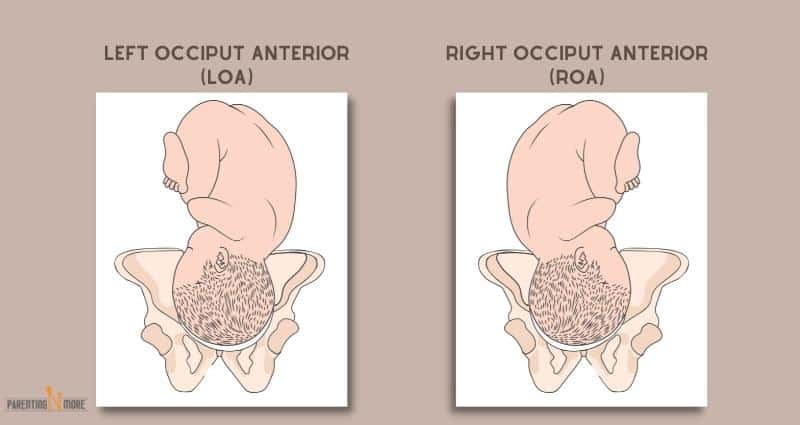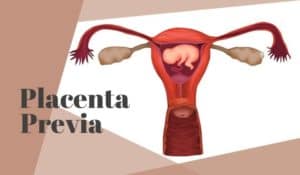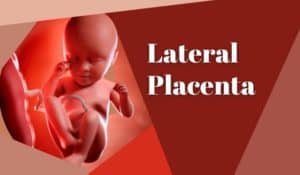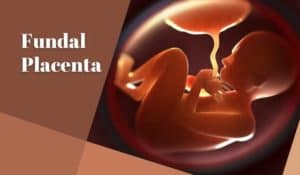Medically Reviewed by: Dr. Veena Shinde (M.D, D.G.O, PG – Assisted Reproductive Technology (ART) from Warick, UK) Mumbai, India
-
Author: Khushboo Kirale
- >> Post Created: January 25, 2022
- >> Last Updated: May 4, 2024

Left Occiput Anterior Position - Table of Contents
Pregnancy is one phenomenon that stirs up a number of emotions in a mother-to-be. The heart and brain, both are constantly at work. Along with the warm feeling of carrying your baby in the womb, you also get a number of doubts, worries, and a feeling of uncertainty, especially with all the medical terms used to describe conditions of pregnancy, the baby’s position, etc.
One such term that you may start hearing around your 34th week into pregnancy is going to be baby position or fetal position. Some common fetal positions are the Left Occiput Anterior Position/LOA position, the Right Occiput Anterior position/ROA position, etc.
This basically describes how the baby is positioned for delivery, how is his head & face and back positioned and so on.
Knowing the baby’s position in the womb during the last weeks of pregnancy can help you in managing pain and discomfort. Even during the early labor, knowing the baby’s position can help you in adjusting your own position and maybe even speed up the delivery process.
This article will throw light on everything you need to know about Left Occiput Anterior/LOA baby Position or LOA position in labor.
What do you mean by Occiput Anterior (OA) Position?
Before we learn about the left occiput anterior position, let’s get an idea about what do you mean by not only baby position or fetal position but also occiput and anterior position. Now keep in mind the anterior placenta position is different from Occiput anterior.
Baby position or fetal position means how your child is positioned just before labor. During labor, the baby passes through the mother’s pelvic bones to reach the vaginal opening to come into this world.
The baby’s position before birth helps your doctor understand, plan, and foresee how your delivery will happen. And occiput anterior (OA) position is considered to be the best for labor and delivery.
Now, Occiput means front of a baby’s face. The side your babies face is positioned – Left or right or transverse while in head down position – or better known as the cephalic position.
Anterior in OA position means that your baby is facing your spine, with his or her back angled more towards your belly button.
Thus when your doctor says Occiput Anterior/OA Position, it means that you child is facing head down facing your back with spine kind of adjacent to your belly button.
Here are the 2 Occiput Anterior positions (OA positions):
- Left Occiput Anterior position
- Right Occiput Anterior position
Left Occiput Anterior (LOA position) & Right Occiput Anterior (ROA position) diagram

What are the benefits of Occiput Anterior (OA) Position
The OA position is believed to be one of the best fetal positions before labor because in this position the baby’s head is in the best position to aid in opening the cervix naturally helping the baby fit more effortlessly through the birth canal.
Other reasons why the Occiput Anterior position is the best is because –
- Though it does not guarantee a vaginal delivery, the occiput anterior position of the baby does result in fewer unplanned C-sections
- OA position results in faster birth processes, on an average
- It has also been noticed that on an average the birthing process is less painful
Left Occiput Anterior Position – LOA baby position
Speaking specifically about the left occiput anterior position (LOA baby position), it is a fetal position, wherein the baby’s head is anterior or down towards the pubic bone, facing toward the mother’s spine, but turned towards the mother’s left side – as shown in the image.
For delivery, the baby will enter the birth canal with its face towards the area that is between the mother’s spine and right hip.
Left Occiput Anterior / LOA position has always been considered the optimal position of the baby before labor.
In case of Right Occiput Anterior (ROA), the baby’s head is down, towards the pubic bone, facing the mother’s spine, but rotated towards the mother’s right side. Therefore, in this case, the baby will enter the birth canal facing the area between the mother’s spine and left hip.
Left Occiput Anterior/ LOA position presenting part
The ‘presenting part’ during labor and delivery is that body part of the baby that leads the rest of the body through the birth canal. When the baby is in a head-down/ cephalic position, it naturally puts its chin closer to the body to suitably fit in the pelvis area.
In the Left Occiput Anterior/ LOA position, the presenting part is the top of the baby’s head, which is just above the occiput. In medical terms, this presenting part is called the Vertex. You will learn about a few more medical terms related to baby positions below.
What’s good about the LOA position of baby is that in this case the baby’s head can flex more easily into a proper position.
Kicks and baby movements in Left Occiput Anterior position
In Left Occiput Anterior, because the baby’s back and shoulders are on the mother’s left side, the limbs are obviously on the right side, and therefore, any movement in the limbs is felt by the mother in the right side of the belly.
There is something called as ‘belly mapping’ wherein a mother can feel the baby’s position with her hands. The part of the belly that feels more solid and gives the mother’s belly the round pregnancy shape is where the baby’s back is. The area of the belly that feels comparatively hollow and has a few small bumps is where the baby’s limbs are.
Medical terms used to describe baby’s positioning
- Presentation: This body part of the baby is the first to enter the pelvis when labor begins. This could be the baby’s head, shoulder, feet, or bottom.
- Vertex presentation: This is when the baby is head-down and the top of its head is entering the pelvis first.
- Breech presentation: This is when the baby’s feet, buttocks, or knees are entering the pelvis first at the beginning of labor.
- Transverse position: This is when the baby is positioned sideways, also called as oblique or shoulder position. There are quite a few times when the baby’s position is such that its shoulders or back enter the pelvis first.
- Occiput Posterior (OP) position: This is the back-to-back position, wherein the baby’s back is against the mother’s back. This could be right occiput posterior (ROP), where the baby is on the right side of the pelvis or left occiput posterior (LOP), where the baby is on the left side.
Read this next
Left Occiput Anterior position and a few fetal positions related FAQs:
Q) Is Left Occiput Anterior position (LOA position) normal?
The LOA baby position is not only normal, but is considered to be one of the ideal positions of the baby before labor.
Q) What is the best fetal position to give birth?
Any anterior position – where the baby is facing the mother’s back – is an ideal position for the baby to be in before giving birth, as it makes it simpler for the baby to navigate through the birth canal.
On the other hand, if the baby positions itself in the right or left occiput posterior position – where the baby’s back is against the mother’s back – women feel more uneasiness and pain in the back during labor as the baby’s head presses against the mother’s spine instead towards the belly. This is called as ‘back labor.’
Q) Is Left Occiput Anterior position the best among all the anterior positions?
Most women have a uterus that is slightly larger on the left side, as compared to the right side. Therefore, the baby will get more space and comfort in the LOA baby position.
However, it is necessary to note that it is equally fine if the baby is in the ROA position.
Q) Is it possible to keep my baby in the anterior position?
Anterior position is the best for the baby to be in when labor begins. And yes, there are some methods that you can apply not only during pregnancy but also during labor, to try to get your baby to enter the pelvis facing your spine.
If your baby is not in an anterior position, you can try a few techniques to guide the baby to turn to get it into an occiput anterior position. However, please note that none of the methods is certain to work. You can try and hope that it works.
- During pregnancy, you spend a little more time on your hands and knees.
- You can try music, lights, and such stimulation to guide the baby to turn toward them.
- There is also a medical procedure called external cephalic version that may help the baby to turn.
It all may be worth a try if you really want the baby to come into the occiput anterior position, but know that sometimes the baby might turn only temporarily and may go back to its original position again.
Q) Is it a problem if my baby is not in occiput anterior position?
If your baby is not in the LOA or ROA position, there is no reason to worry because it doesn’t necessarily mean there will be a problem with the labor or birth.
An ultrasound scan will give your doctor an idea of the fetal position and they will then decide on the best and easiest way for you to go through labor and deliver your baby safely.
Conclusion
The Left Occiput Anterior – LOA position is considered as one of the optimal fetal positions for easier labor and birth for all the reasons mentioned in the article. If you have any further questions about the same, never hesitate to ask your doctor.
But do keep in mind that every pregnancy and every birth is different and your journey through it all – Is your own. So even if your fetal position is different, do not stress over it; your doctor will find the best and safest way to bring your baby into this world.
Happy Pregnancy!










Well written and explained. Keep-up the good work.
All the best.
Comfortably, the post is really the freshest on that laudable topic. I match in with your conclusions and also will thirstily look forward to your next updates. Simply just saying thanks will not just be sufficient, for the fantastic clarity in your writing. I will certainly best away grab your rss feed to stay abreast of any kind of updates. Great work and much success in your business dealings!
Youre so cool! I dont suppose Ive read anything like this before. So good to find information on this subject.
Hi, I love the article is well written and straight to the point. keep up the good work.